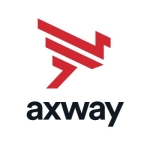I use the solution in my company since we have lots of different use cases attached to the tool. Mainly, we have incoming flow in SFTP or SCP protocols. Some of the files are pushed to local file systems or other internal servers. For outgoing flow, we have BMC Software to control and receive orders and push files to the server using different protocols. We also have a few specific business processes to connect HTTPS servers to get or push files.
The solution's most valuable feature revolves around the tool's engines, which can do many different things.
The weakness is that the engines associated with the tool require too much expertise to master how they work.
Finding people who know the product from the market or choosing IT personnel to work with can be challenging.
Improvements can be made to the tool's user interface and user experience. It would be good for the tool to develop a command-line interface to replace all the scripts present in the product and execute all the different scripts.
Currently, what we are looking at in the tool is already in development. It should support different storage solutions on the cloud, be it on AWS Azure, Google, or even if it is something different, like S3. The product is currently integrating with the full support of the protocols. There should be support for different storage solutions on the cloud. I want the tool to support Google Drive.
I feel the tool's setup process could be made better, but it can be difficult because the tool's vendor has been proposing a lot of different implementation methods. You can use it on the cloud or install it on the cloud, Windows, or Linux, and the tool needs to manage it on all the different operational systems. On the on-premises part, it is different from how it is on the cloud. For me, being able to install the tool can be complicated if I consider how I want to configure it. I want the tool to offer a CLI or a command line interface to help the users figure out how to work with the tool.
The tool's scalability can be made better. Currently, we are using a cluster, so you can always add more nodes. You can upgrade each node and its capacity for processing. In the cluster, when you add a node, you don't do just one node, so the cluster needs some processing abilities to manage all the nodes. It is a very scalable tool, and it has good capability. If you go for the cloud installation instead of an on-premises one, you are able to develop the scalability for any project on the cloud because it has the infrastructure to process as many nodes as you need.
I think what could be improved for the support is understanding that any answer must be used by the user in practice. Sometimes, when you have an answer, it is not acceptable because sometimes it is not defined. Sometimes, when the product is improved or supports some new feature, it acts too limited to be useful. My issue is that depending on the module you want support for, you can have good support, but the support is more like five or four out of ten because the support changes and doesn't understand how the product is used by the user or how it should work. I recently raised a ticket with support. We had an issue with the tool, and the support had one of my previous tickets but told me to do something, and I found that the response was not good. The support wanted us to change our environment parameters, which would have an impact on the other software tools. The support did not understand, and it was hard for us to explain that we could not break all those systems just to correct the issue on a single software. Lots of exchanges had to happen between our company and the support team just to explain a response to an issue in practice and in theory. The support team's solution could be great, but in practice, it was not so good.
I have been using IBM Sterling File Gateway for ten years. I am just a user of the solution.
It is a stable solution. Stability-wise, I rate the solution an eight out of ten. The issue is with the resource, so when you install the product, you will face some limits on what can be used. Sometimes, if you have four to five systems or if you have four CPUs, it will meet its limits, but it is the resource that IBM needs where there are limits.
It is a very good and scalable solution. Scalability-wise, I rate the solution an eight out of ten.
The solution's technical support is sometimes slow to understand the use cases, and the answers are not practical. The responses from the technical team cannot be used. I rate the technical support a four out of ten.
If ten means the setup process is difficult, I rate the product's initial setup phase as a two out of ten.
The product's initial setup phase is hard because there are a lot of things you need to finetune in the product. We are using it in a highly resilient and highly available configuration. We are using the tool across different areas. If ten means very easy setup, I rate the setup phase as two or three out of ten. It is too difficult to implement the software. I know how to use the tool. I know how to use the tool, but a lot of people don't have it. I am still in the process of learning more about IBM Sterling File Gateway, and I plan to use Secure Proxy. We are using the external authentication server. All the software needs to work together, and sometimes, it is difficult to know which one you need to begin with and how it works between them. I think the tool is difficult to begin working with during the initial stages. You can have some easier solutions, but you will lose out on the high availability or the high resilience functionality offered by IBM Sterling File Gateway.
The solution is deployed on an on-premises model as a cluster in our data center.
For deployment, I updated the application systems. I had a project for eighty days. We had to keep all the previous data on the configurations, and I didn't have all the process-related documentation. I had a lot of work to do. During installation of the product, a one-day operation is needed. You install the tool in several different environments and servers, and you need to configure everything together to be able to check everything, and that is where you lose out on a lot of time. The time needed to deploy the tool depends more on your knowledge of the tool. The configuration takes much more time than the setup itself.
The time required to learn to use the tool depends on the level you want to use it. The tool's use can be learned in one or two weeks, but generally, you need a lot of generic knowledge. To be able to completely work on the tool, you would need several months.
The biggest advantage of the tool is that it acts as a centralized solution for all the different protocols. From our company, we are using, but not directly installing, the IBM Sterling File Gateway. However, we are using the basic protocols with it.
One needs to have a lot of knowledge to use the tool. You need to read a lot of documentation, participate in the community, and do several other things.
I rate the tool a nine out of ten.















